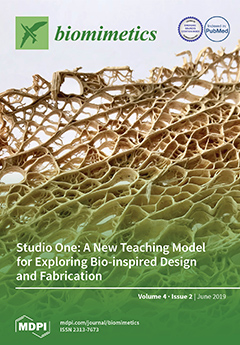Magnesium hydroxide nanoparticles (Mg(OH)
2NPs) have recently attracted significant attention due to their wide applications as environmentally friendly antimicrobial nanomaterials, with potentially low toxicity and low fabrication cost. Here, we describe the synthesis and characterisation of a range of surface modified Mg(OH)
[...] Read more.
Magnesium hydroxide nanoparticles (Mg(OH)
2NPs) have recently attracted significant attention due to their wide applications as environmentally friendly antimicrobial nanomaterials, with potentially low toxicity and low fabrication cost. Here, we describe the synthesis and characterisation of a range of surface modified Mg(OH)
2NPs, including particle size distribution, crystallite size, zeta potential, isoelectric point, X-ray diffraction (XRD), dynamic light scattering (DLS), scanning electron microscopy (SEM), thermogravimetric analysis (TGA), energy dispersive X-ray analysis (EDX), Fourier transform infrared spectroscopy (FTIR), and transmission electron microscopy (TEM). We explored the antimicrobial activity of the modified Mg(OH)
2NPs on the microalgae (
C. reinhardtii), yeast (
S. cerevisiae) and
Escherichia coli (E. coli). The viability of these cells was evaluated for various concentrations and exposure times with Mg(OH)
2NPs. It was discovered that the antimicrobial activity of the uncoated Mg(OH)
2NPs on the viability of
C. reinhardtii occurred at considerably lower particle concentrations than for
S. cerevisiae and
E. coli. Our results indicate that the antimicrobial activity of polyelectrolyte-coated Mg(OH)
2NPs alternates with their surface charge. The anionic nanoparticles (Mg(OH)
2NPs/PSS) have much lower antibacterial activity than the cationic ones (Mg(OH)
2NPs/PSS/PAH and uncoated Mg(OH)
2NPs). These findings could be explained by the lower adhesion of the Mg(OH)
2NPs/PSS to the cell wall, because of electrostatic repulsion and the enhanced particle-cell adhesion due to electrostatic attraction in the case of cationic Mg(OH)
2NPs. The results can be potentially applied to control the cytotoxicity and the antimicrobial activity of other inorganic nanoparticles.
Full article






